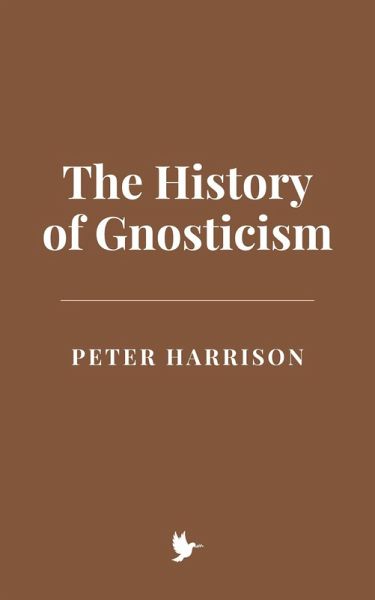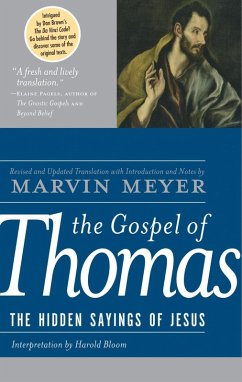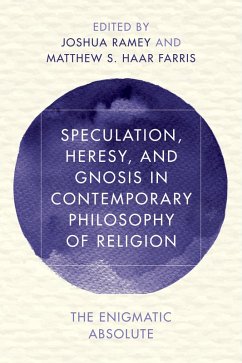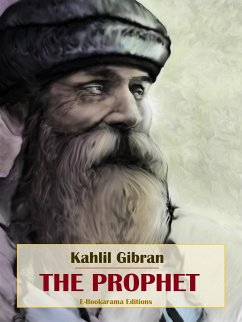
The History of Gnosticism (eBook, ePUB)

PAYBACK Punkte
0 °P sammeln!
This book explores the history, concepts, and enduring influence of Gnosticism, tracing its evolution from ancient origins to its manifestations in contemporary culture. Gnosticism, characterized by its emphasis on hidden knowledge (gnosis), cosmic dualism, and the soul's quest for liberation, has shaped spiritual, philosophical, and cultural landscapes for millennia. Beginning with its roots in Jewish apocalypticism, Hellenistic philosophy, and early Christianity, the book examines how Gnostic movements articulated a worldview that challenged orthodox religious doctrines and emphasized person...
This book explores the history, concepts, and enduring influence of Gnosticism, tracing its evolution from ancient origins to its manifestations in contemporary culture. Gnosticism, characterized by its emphasis on hidden knowledge (gnosis), cosmic dualism, and the soul's quest for liberation, has shaped spiritual, philosophical, and cultural landscapes for millennia. Beginning with its roots in Jewish apocalypticism, Hellenistic philosophy, and early Christianity, the book examines how Gnostic movements articulated a worldview that challenged orthodox religious doctrines and emphasized personal spiritual enlightenment.
The text delves into the development of Gnostic sects, such as the Valentinians and Sethians, and their complex cosmologies, which reimagined creation as the flawed work of a Demiurge. It analyzes the suppression of Gnosticism by the early Church and its persistence through medieval heresies like the Cathars and Bogomils. The Renaissance revival of Gnostic and Hermetic traditions is highlighted, as are the contributions of thinkers like Carl Jung, who reframed Gnosticism within the context of depth psychology, emphasizing its relevance to the human psyche and the process of individuation.
Modern religious movements, including Theosophy and Anthroposophy, reinterpreted Gnostic themes, integrating them with Eastern philosophies and contemporary spirituality. Popular culture has further embraced Gnostic ideas, as seen in films like The Matrix and the novels of Philip K. Dick, which explore themes of simulated realities and spiritual awakening. The book concludes by examining "Digital Gnosticism," a phenomenon emerging in the internet age that reimagines Gnostic ideas within virtual realities and artificial intelligence, offering a lens for understanding the ethical and existential challenges of technological advancement.
Through historical analysis, textual commentary, and exploration of cultural impact, this book demonstrates Gnosticism's adaptability and enduring resonance. It provides a comprehensive account of how Gnostic ideas have evolved, influencing theology, philosophy, literature, art, and digital culture, and offering insights into humanity's perpetual quest for meaning, liberation, and self-understanding.
The text delves into the development of Gnostic sects, such as the Valentinians and Sethians, and their complex cosmologies, which reimagined creation as the flawed work of a Demiurge. It analyzes the suppression of Gnosticism by the early Church and its persistence through medieval heresies like the Cathars and Bogomils. The Renaissance revival of Gnostic and Hermetic traditions is highlighted, as are the contributions of thinkers like Carl Jung, who reframed Gnosticism within the context of depth psychology, emphasizing its relevance to the human psyche and the process of individuation.
Modern religious movements, including Theosophy and Anthroposophy, reinterpreted Gnostic themes, integrating them with Eastern philosophies and contemporary spirituality. Popular culture has further embraced Gnostic ideas, as seen in films like The Matrix and the novels of Philip K. Dick, which explore themes of simulated realities and spiritual awakening. The book concludes by examining "Digital Gnosticism," a phenomenon emerging in the internet age that reimagines Gnostic ideas within virtual realities and artificial intelligence, offering a lens for understanding the ethical and existential challenges of technological advancement.
Through historical analysis, textual commentary, and exploration of cultural impact, this book demonstrates Gnosticism's adaptability and enduring resonance. It provides a comprehensive account of how Gnostic ideas have evolved, influencing theology, philosophy, literature, art, and digital culture, and offering insights into humanity's perpetual quest for meaning, liberation, and self-understanding.
Dieser Download kann aus rechtlichen Gründen nur mit Rechnungsadresse in A, B, CY, CZ, D, DK, EW, E, FIN, F, GR, H, IRL, I, LT, L, LR, M, NL, PL, P, R, S, SLO, SK ausgeliefert werden.













